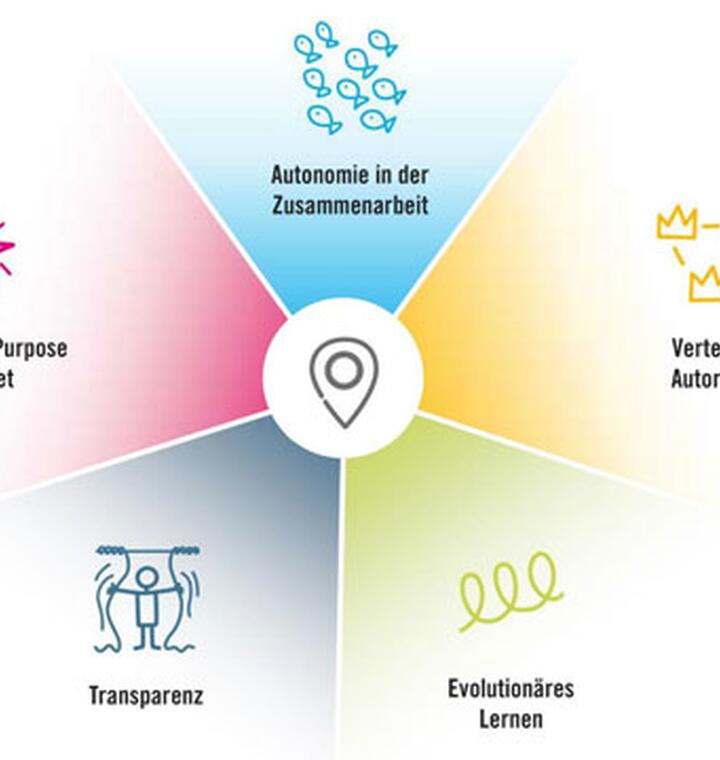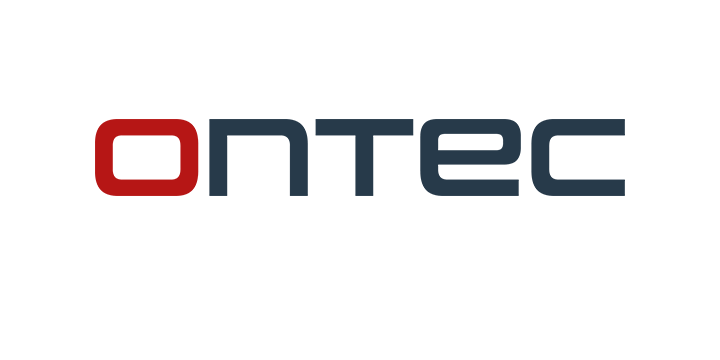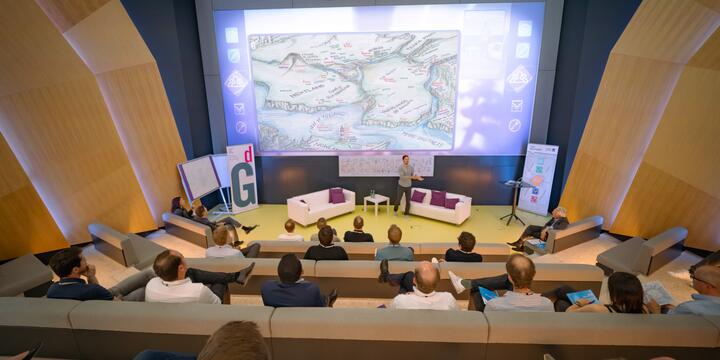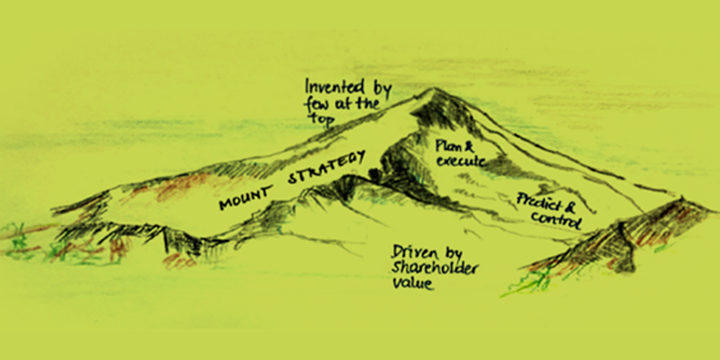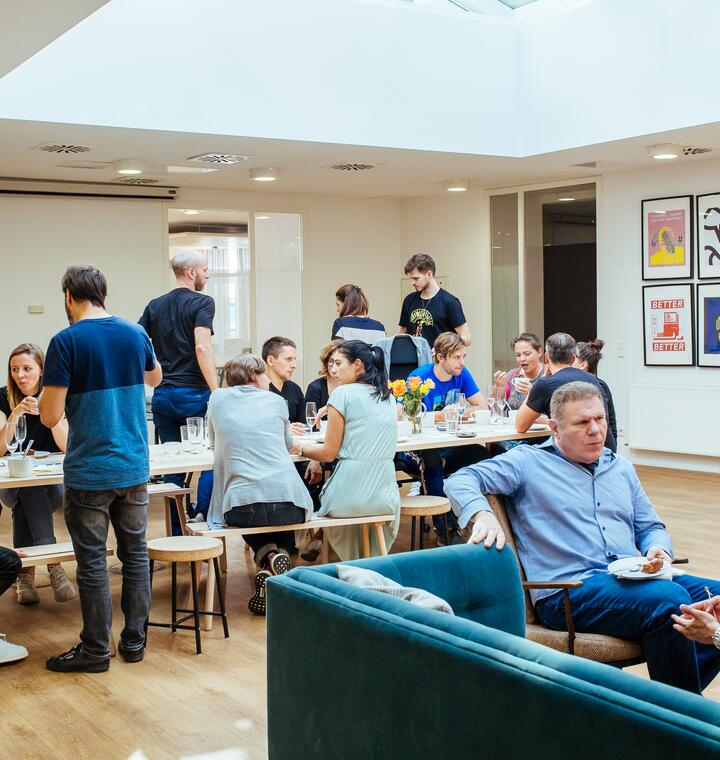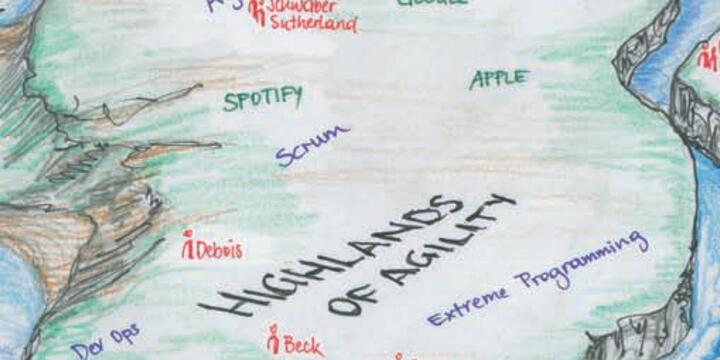5 Principles of next:land:
Autonomy in Collaboration
Why autonomy in collaboration? The logic of superior and subordinate is engrained in traditional management hierarchy. This results in victim- persecutor dynamics and dependency on individual relations; often causing people to experience arbitrariness and powerlessness. Next:organizations are built as networks of interdependent actors working with peers serving a shared purpose - manifesting lateral rather than hierarchical relationships.
next:land organizations leverage the uniqueness and diverse talents and potentials of people. Rather than creating dependency via personal power holding people interact as independent actors with independent actors on eye-level, collaborating with high autonomy and self-responsibility. Clear roles and authorities allow for ownership and entrepreneurial spirit while contributing to something bigger than oneself.
In peer-to-peer setups leadership unfolds in temporary enactment of lateral leadership. These leader-follower relations are either based on expertise (meritocracy) and/or distributed authority (cf. Holacracy). In contrast to conventional power hierarchies those relations are reciprocal, there is no subordination of individuals, since an actor leads another in some respects and is led by the same partner in other aspects. Thus, leadership is a dynamic practice, not a manifestation of higher / lower rank.
Naturally this leads to conflicts about priorities and contradictory preferences which must be dealt with by equally ranked peers. The power hierarchy – in conventional setups serving as conflict avoidance machine (escalation of conflicts to superior relieves coworkers from solving conflicts with each other) – is no longer available. Thus, the principle of autonomous individuals in collaboration is more demanding with regards to conflict solving and negotiation skills for all involved partners.
How this principle shows up in practice
... the dichotomy of autonomy in collaboration:
Different from the other principles it is hardly possible to determine “levels of autonomy in collaboration”. It seems more a dichotomy of either autonomous actors or dependent actors (superior-subordinate relations related to people).
Practices building on autonomous actors: Lateral Leadership (Meritocracy), Sociocracy or Holacracy
This approach has been developed in and for project organizations. It is a well-established principle, but always had difficulties to come into effect within conventional management hierarchies. When in doubt the power hierarchy always overruled the meritocracy built into the system (cf. similar difficulties when establishing expert careers).
Lateral leadership builds on confidence in the professional competence of a peer - with regards to a specific field - and in the meaningfulness of the respective task or project. To convey meaning and to achieve commitment dialogue between actors is a basic prerequisite. And it’s without alternative - since the power to give orders is no longer available in the system. Of course, this results in additional work to establish (temporary) compliance. At the same time chances for sustainable deployments are increased.
Important characteristics of lateral leadership:
- Shared objectives are jointly defined and their fulfillment is monitored in a dynamic and self-organized way
- Balance between various stakeholder interests is the topic of regular dialogues involving all parties
- Collaboration depends on trust, which builds on experiencing successful collaboration
- Regular feedback processes are necessary to solve conflicts as well as retain focus and cohesion
Challenges: Autonomous collaboration requires a common point of reference (cf. purpose) and rules or policies that are binding for each player in the network. The network itself is responsible for evolving the rules as a collective. No powerholder has the authority to overrule any of them without following the established processes how to change the rules of the game. This demands efficient and clear decision-making processes.
Dysfunctional structures and processes hinder the establishment of collaboration or even make it impossible because they might contradict the principle of distributed authority. If a top down intervention can be expected at any given time, conflict solution and collaboration will only be executed conditionally. Processes and standards like performance appraisal routines, compensation and benefit, promotion criteria, allocation of resources etc. might undermine a culture of collaboration by establishing a competitive environment and creating an artificial scarcity of resources.
For examples, you could look into Morning Star’s different hierarchies of influence not positions or Spotify’s network of teams or Gore or Valve - network of teams still using superior relations, or Sociocracy and Holacracy as full replacement for management hierarchy.

